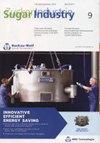二氧化碳中性糖厂,在负担得起的步骤
IF 0.2
4区 农林科学
Q4 FOOD SCIENCE & TECHNOLOGY
引用次数: 0
摘要
糖厂实现二氧化碳中性的第一步是用蒸汽干燥机取代现有的滚筒干燥机。这个的成本大约是。每年每减少一吨二氧化碳250欧元。在这第一步中,工厂的二氧化碳排放量减少了大约。第二步是将蒸干的甜菜浆在锅炉中燃烧,工厂除石灰窑外均为二氧化碳中性。会有一些多余的甜菜浆,这取决于糖厂的效率。本文章由计算机程序翻译,如有差异,请以英文原文为准。
CO2-neutral sugar factory, in affordable steps
The first step for a sugar factory to become CO2 neutral is to replace the existing drum drier with a steam drier. The cost of this is approx. €250 per ton of CO2 reduction per year. In this first step, the CO2 emissions of the factory are reduced by approx. 33% The second step is to burn the steam-dried sugar beet pulp in the boiler, and the factory will be CO2 neutral, except for the lime kiln. There will be some excess sugar beet pulp, depending on the efficiency of the sugar factory.
求助全文
通过发布文献求助,成功后即可免费获取论文全文。
去求助
来源期刊

Sugar Industry-Zuckerindustrie
工程技术-食品科技
CiteScore
0.50
自引率
50.00%
发文量
22
审稿时长
18-36 weeks
期刊介绍:
Sugar Industry / Zuckerindustrie accepts original papers (research reports), review articles, and short communications on all the aspects implied by the journals title and subtitle.
 求助内容:
求助内容: 应助结果提醒方式:
应助结果提醒方式:


